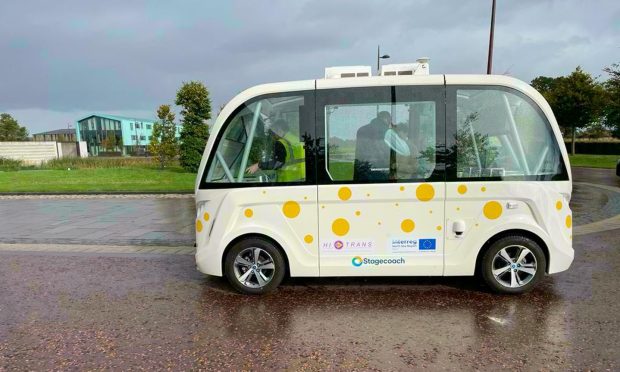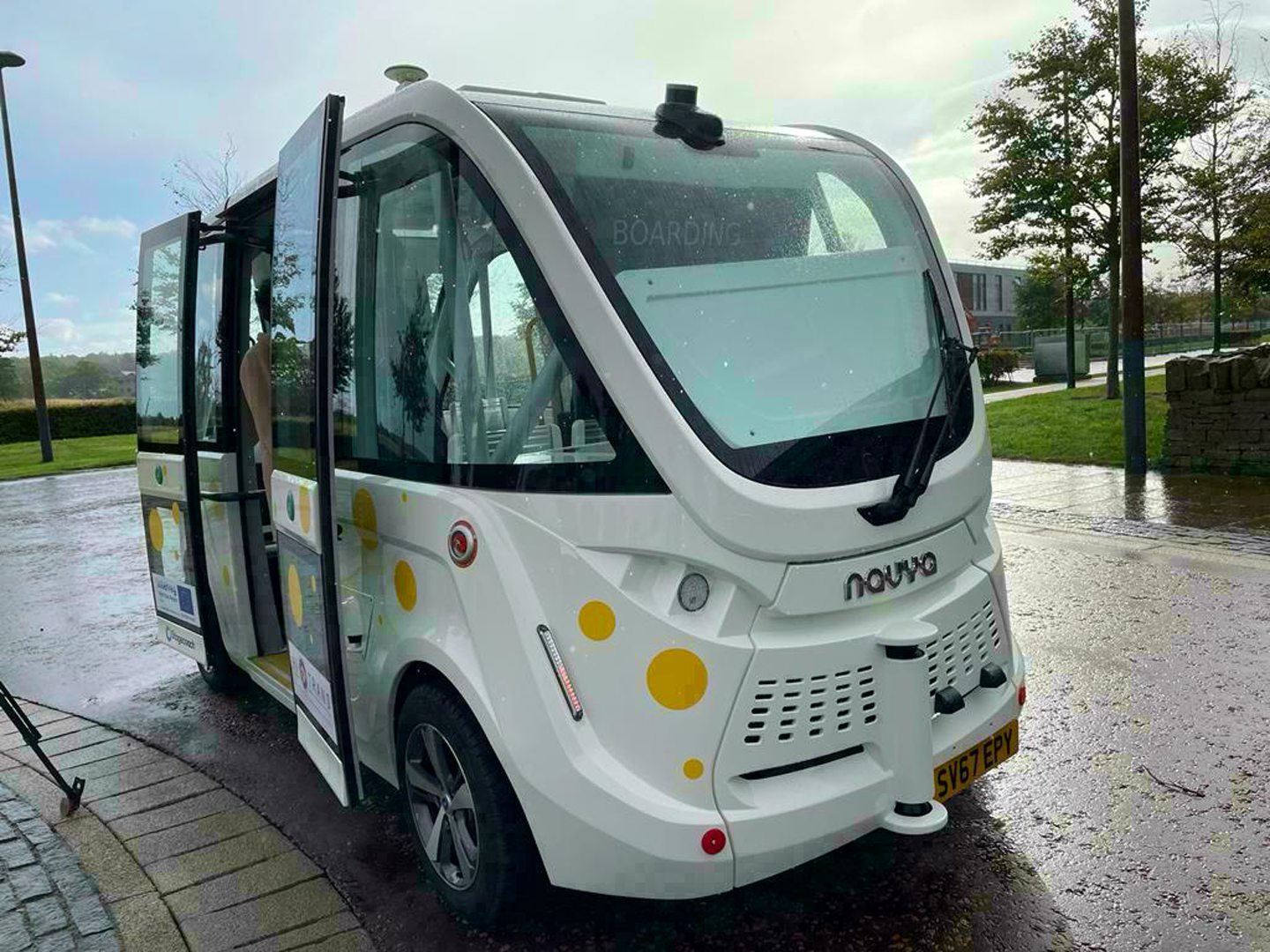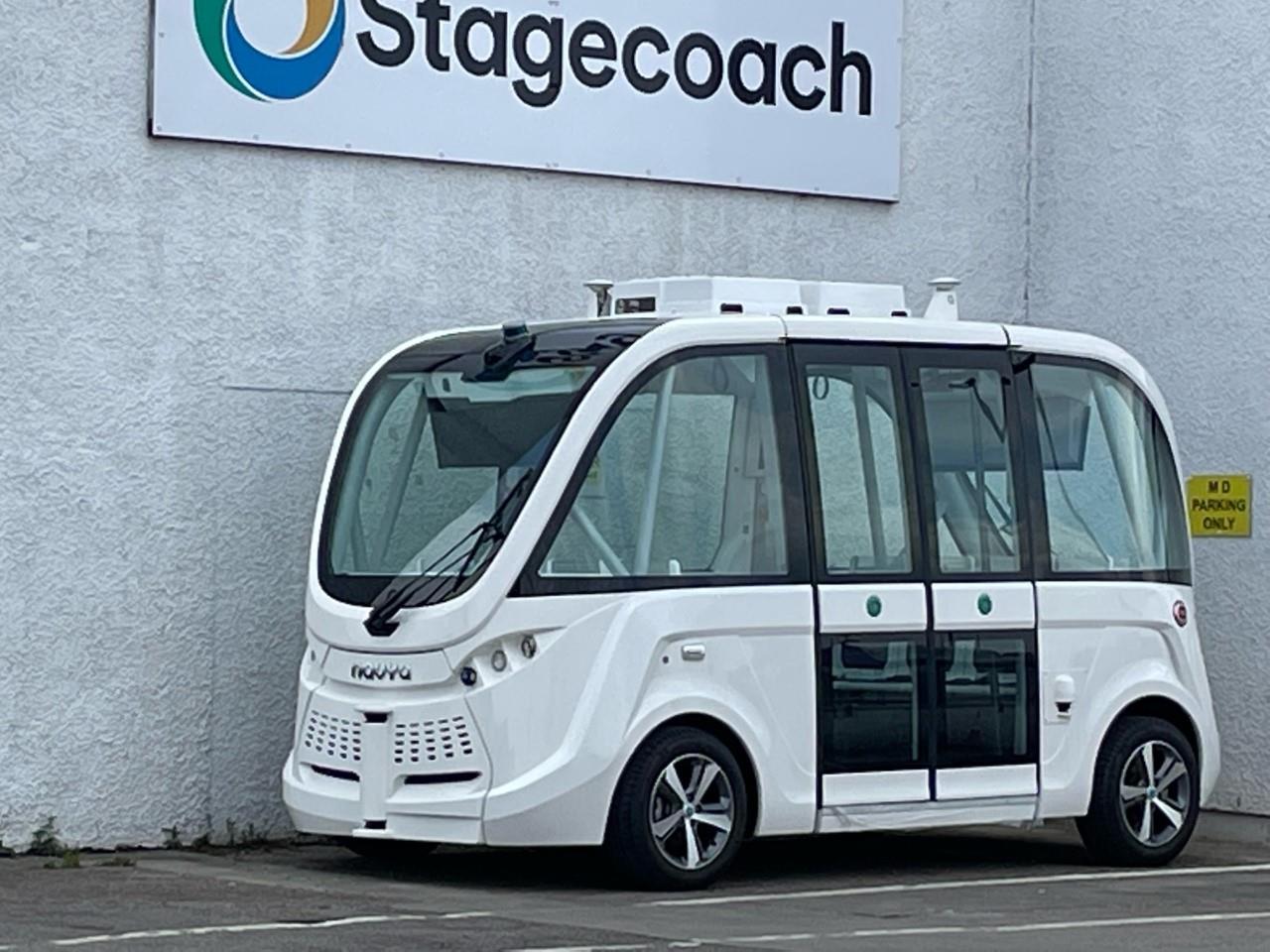The official launch of a driverless bus in Inverness has been delayed because of technical problems resulting in the vehicle losing track of its route.
The autonomous vehicle has been occasionally transporting passengers on the 1.8 mile journey between Inverness Campus and the retail park for some time now, but today was due to be the official launch of the pilot scheme.
However, the official ceremony which was due to take place shortly after 11am today has faced difficulties.
It's the official launch of Scotland's first autonomous vehicle. The Itsy Bitsy Teenie Weenie Driverless Machiney takes passengers between Inverness Campus and the Retail Park. Hop on board -it's free! @HITRANS_RTP @StagecoachHLand @HighlandCouncil @UHI_Inverness @HIEScotland pic.twitter.com/ulKVpyOpSt
— Inverness Campus (@invernesscampus) October 6, 2022
Despite the best efforts of those in attendance, which included representatives of the regional transport partnership Hitrans and Stagecoach, nobody was able to get the vehicle moving for more than an hour.
It is understood that there had been issues getting the vehicle to identify the route it is meant to be on — or in other words, the technology of the bus wasn’t sure exactly where it was.
As of 12.45pm, operators decided to take manual control for today’s demonstration.
‘It would have to be today of all days’
Stagecoach bus driver Iain Craven, one of three trained to operate the shuttle, said today’s problem came down to the machine not recognising its location.
While efforts were ongoing to get it fully functioning again, he said: “There’s a problem with its lidar, which basically means its radar which has lasers.
“It can’t quite figure out exactly where it is at the moment.
“Everything else seems to be working on it.
“It would have to be today of all days. It couldn’t have been yesterday when it was up here for six hours doing its stuff.”
Ranald Robertson, director at Hitrans, said this was the “first day that we have had an issue where the bus doesn’t seem to be connecting to its autonomous operation”.
He said it’s “unfortunately a very important period of time for the service not to be operating autonomously”.
Why has the Inverness driverless bus got yellow polka dots on it now?
Today was also the debut of the new colour scheme for the driverless bus.
The Nayva electric shuttle now sports yellow polka dots, following a competition the Press and Journal run to name the new vehicle.
More than 200 people entered the competition to name the bus, but in the end it was Milton of Leys mum Yteine Watters who came up with the winning name, the Itsy Bitsy Teenie Weenie Driverless Machiney.
A first of its kind project for Scotland
Trials of the Stagecoach-run service of the driverless bus will run until March next year.
The first of its kind for Scotland pilot project was backed with EU funding of nearly £150,000 to lease the bus.
Up to 15 people can journey on it at once, with 11 seated and four standing.
The Inverness driverless bus does not have a steering wheel, driver’s seat or brake pedals.
Its movements are carried out by computer, and controlled by a satellite navigation system with sensors attached to the vehicle which pull it to a stop when obstacles are detected.
The pilot project has been designed to test the viability of the driverless technology, and its potential for the future of transport.



Conversation